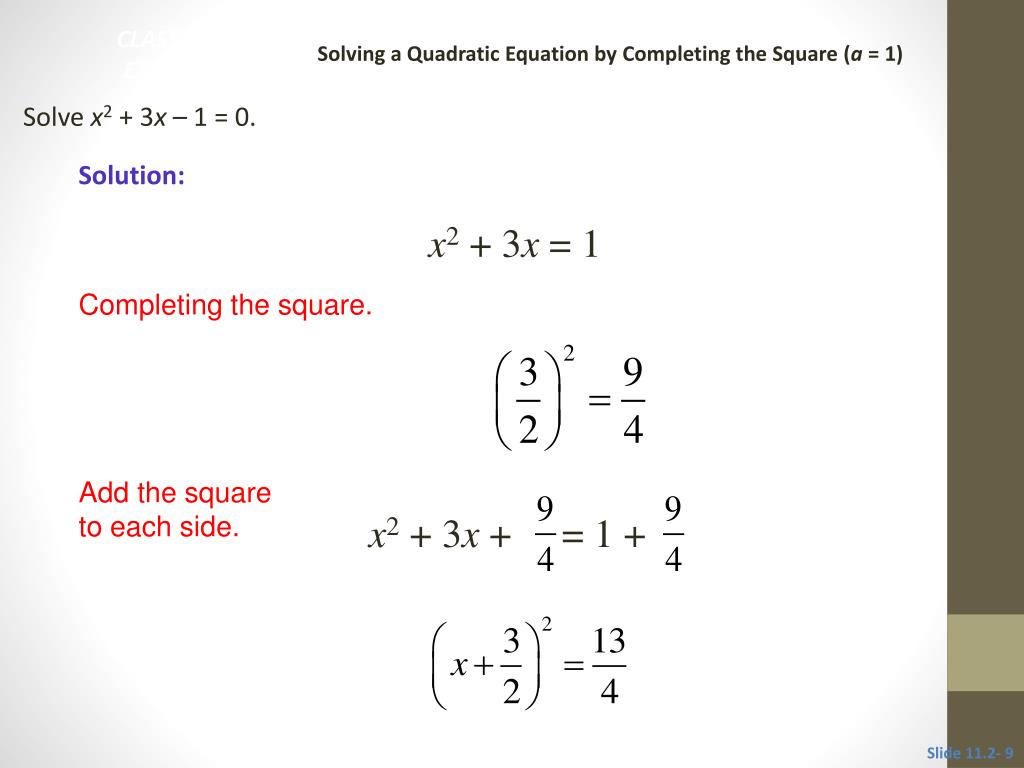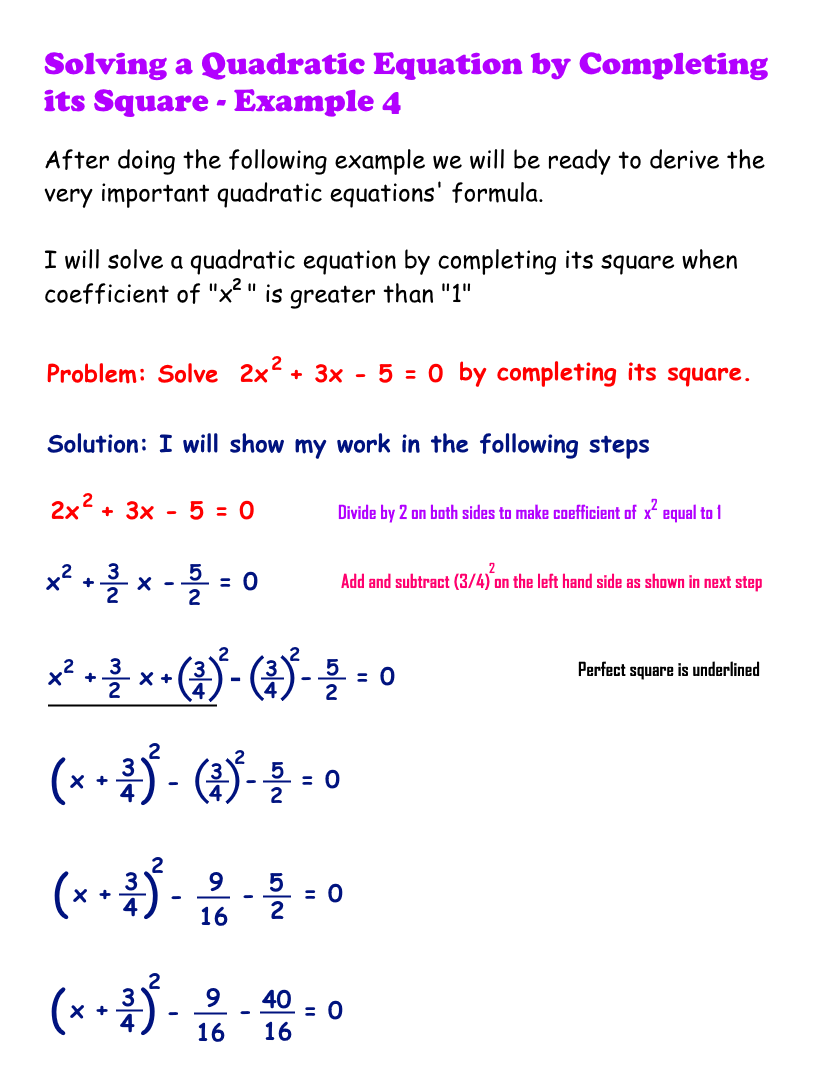
Therefore, it can be written as ( x + a) 2, where a is the number from the bug's midsection.

This procedure is called completing the square because, by adding 16 to both sides in Example 2, you're creating a trinomial that's a perfect square. In this problem, the coefficient of x 2 is 2, so divide everything by 2. If it's not, divide everything in the equation by that coefficient. Step 1: Make sure the coefficient of x 2 is 1. So in order to solve it, you have to resort to completing the square. Solution: Even though you can factor out a GCF of 2, the resulting equation, 2( x 2 - 8 x + 5) = 0, cannot be factored further. Just a brief warning before I get started: This problem will contain a scatological reference and is hence rated PG by the National Advisory Council on Lowbrow Humor in Mathematics.Įxample 2: Solve the equation 2 x 2 - 16 x + 10 = 0. Because there are a lot of steps involved, I should explain how they work in the context of an example. Now it's finally time to date your cousin, er, complete the square. You can solve for x by square rooting both sides of the equation. There's only one major thing to keep in mind when canceling out that exponent: If you're canceling out an even exponent, you need to stick in a "±" sign on the left side of the equation when you jam those radical signs on.įor example, consider the equation x 2 = 16. The "±" rule discussed here takes care of that for you when dealing with equations. Remember, last section you learned that n x n when n is an even number. To cancel out the exponent of 3, leaving behind only what was once raised to the third power, take the third root of both sides of the equation. You'd first isolate the quantity raised to the exponent (just like you did in radical equations). In other words, you can cancel out an exponent of n by taking the nth root of both sides of the equation. You would have to raise both sides of the equation to the fourth power, leaving you with During that process, you found out raising both sides of an equation to the nth power cancels out a radical with index n.
#Solving quadratic equations by completing the square how to#
Last section you learned how to solve radical equations. However, you need to learn one thing before I can show you how to complete the square: how to eliminate exponents in equations. Here's the best news yet: Completing the square will always work, unlike the factoring method, which, of course, requires that the trinomial be factorable.

(After all, this was his cousin, so there was no prospect of post-dance "extracurricular activities.") Sure it was awkward, and neither of them really had a lot of fun, but at least their parents knew exactly how the evening was going to end.

It's like that guy you knew in high school whose parents made him take his cousin (who usually looks like a perfect square) to the prom. The next technique you can use to solve quadratic equations is called completing the square it forces the equation, against its will, to contain a perfect square, which can then be easily eliminated.Ĭompleting the square isn't exactly the easiest way to solve quadratic equations its strength lies in the fact that the process is repetitive and predictable.

6.1 Example: the sum of a positive number and its reciprocal.


 0 kommentar(er)
0 kommentar(er)
